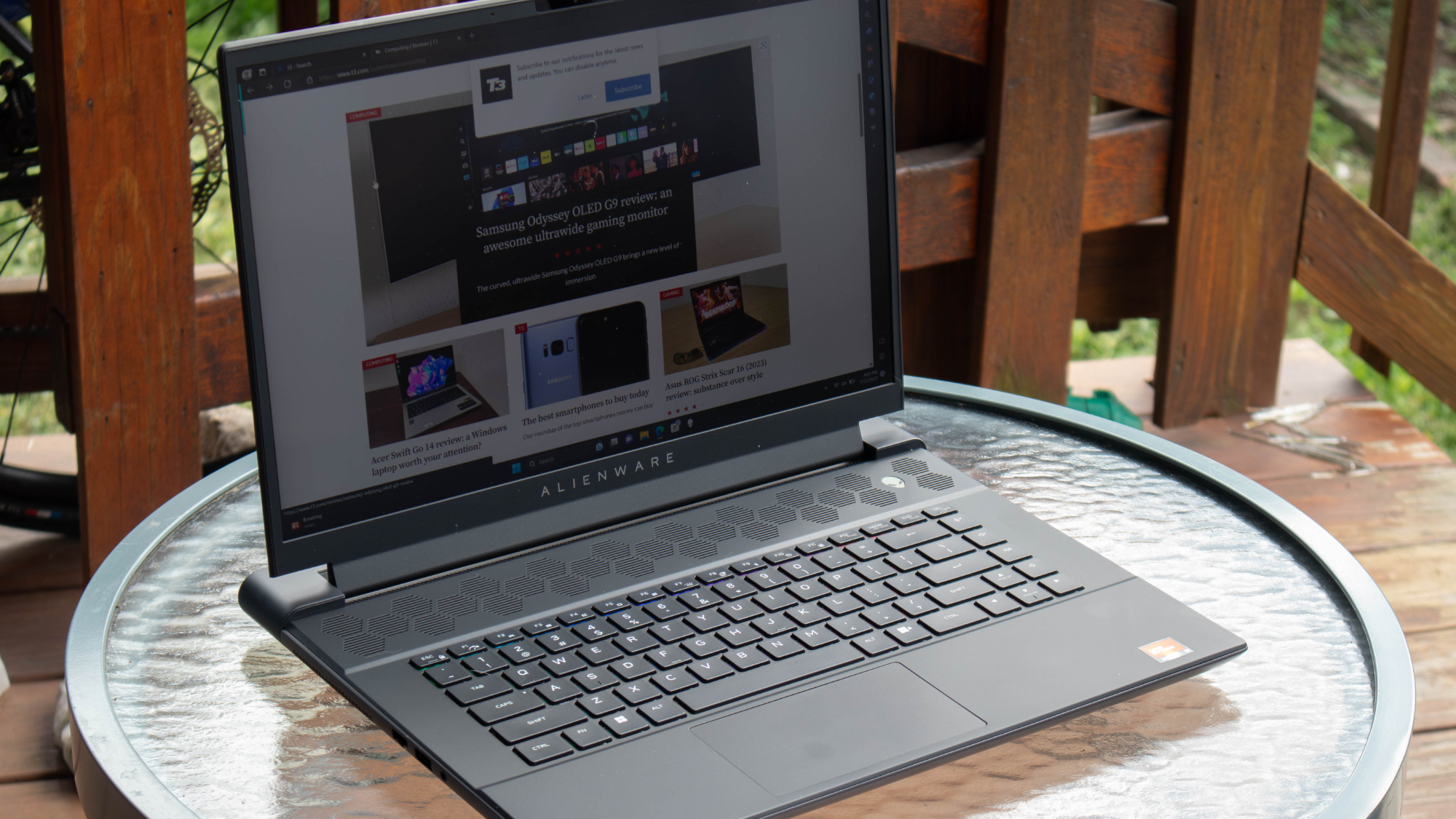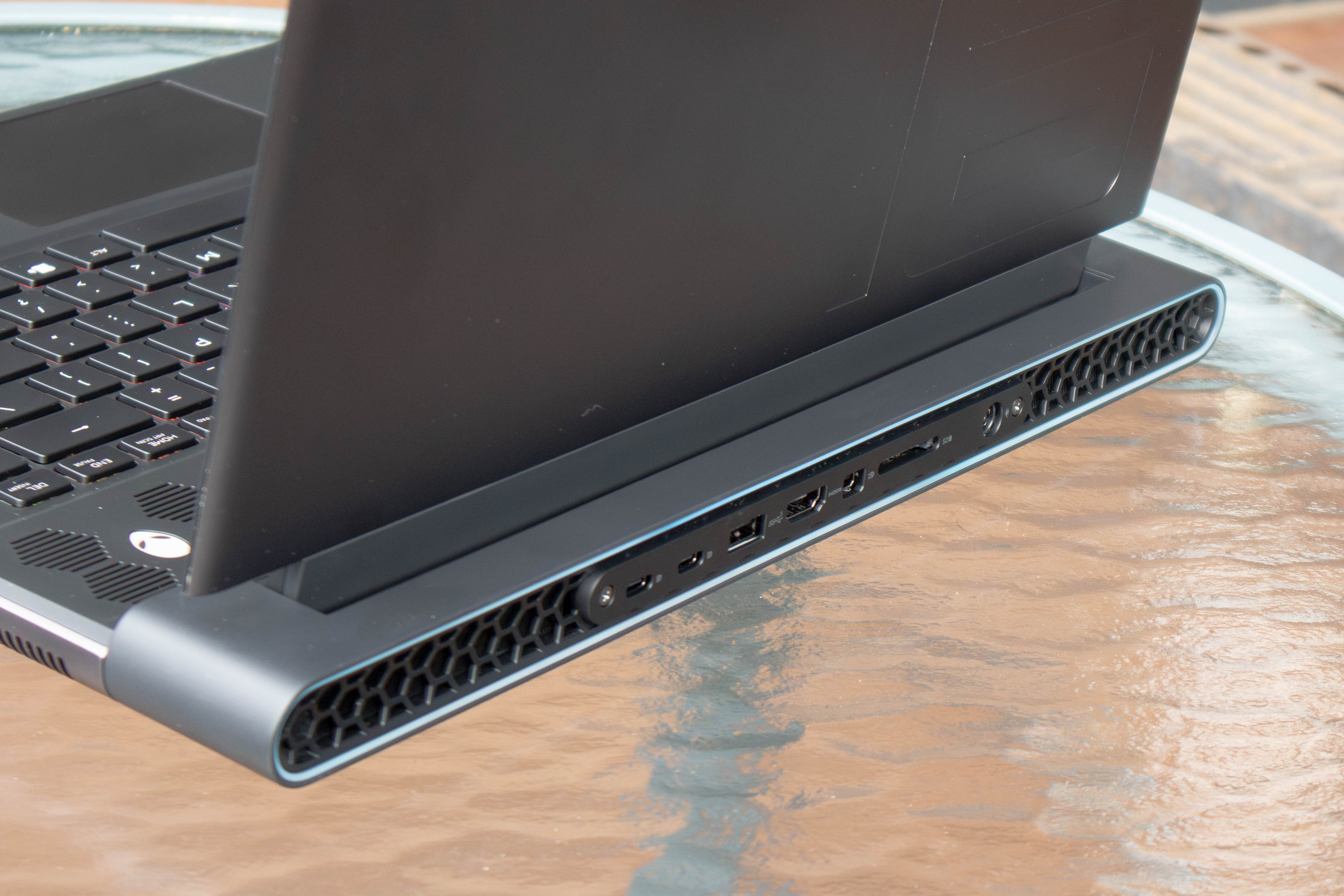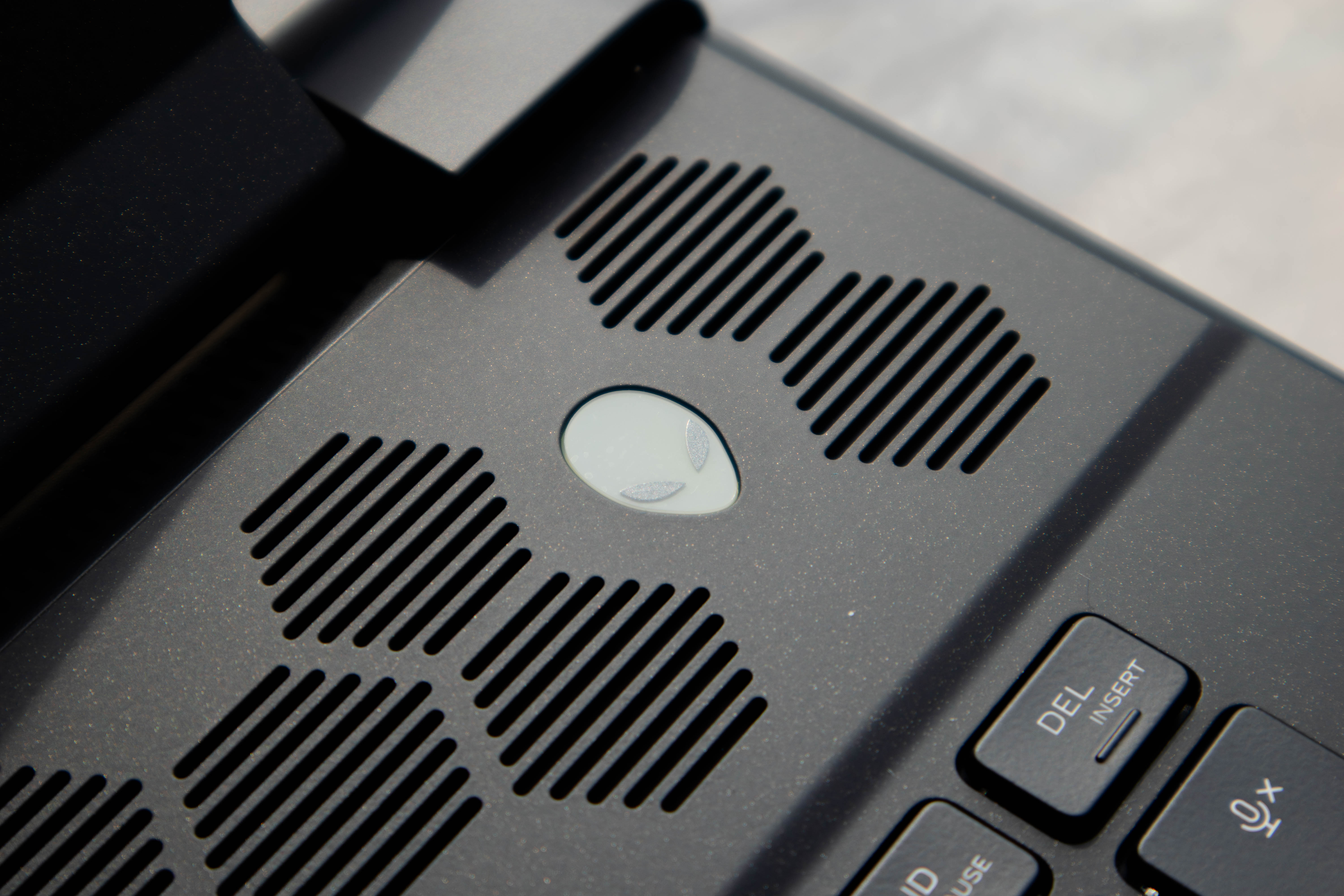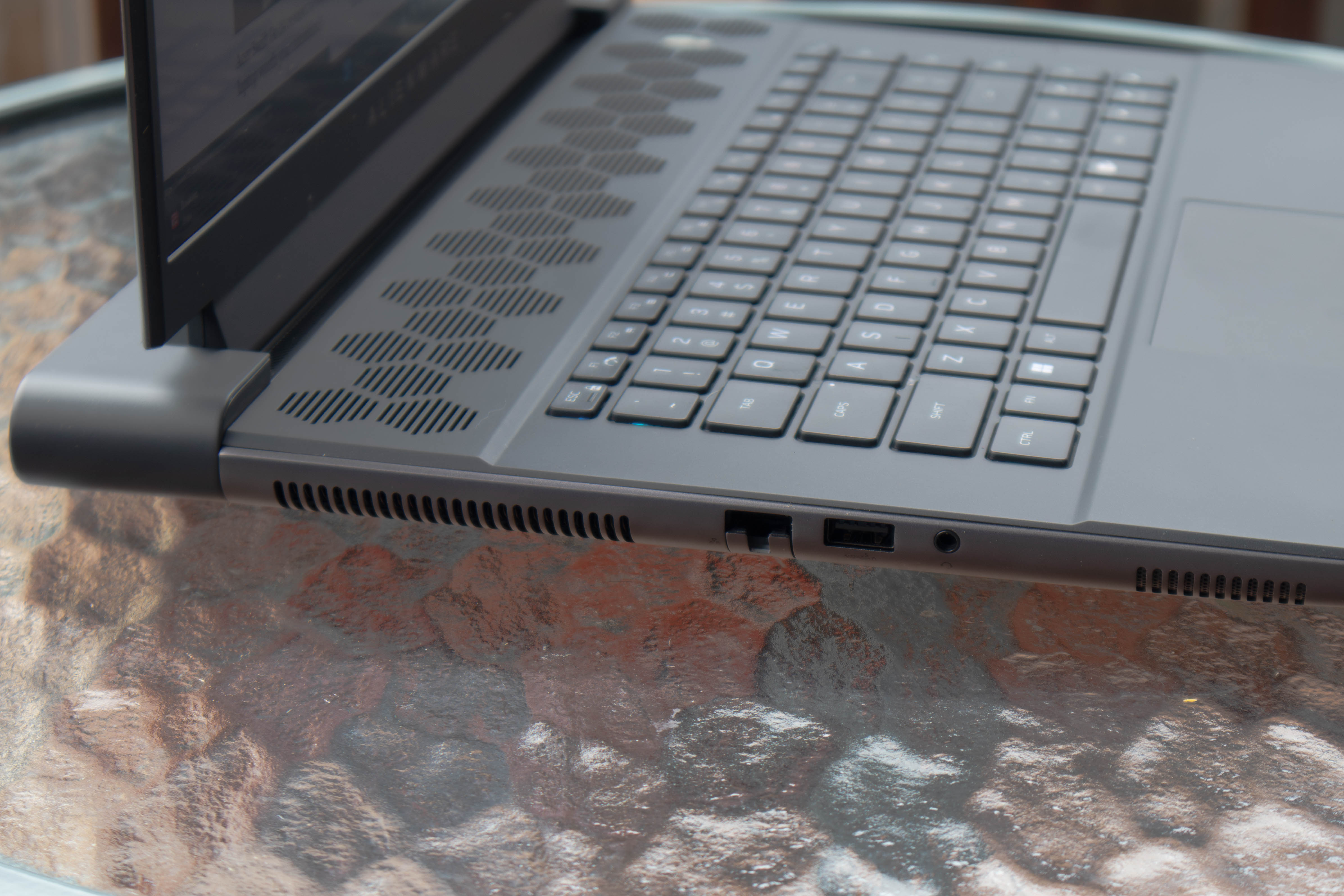Alienware M16 review: the sweet spot for price and performance
The Alienware M16 is a powerful gaming laptop that has the performance to spare. Should you consider buying one?


The Alienware M16 is an excellent gaming laptop that offers the cutting-edge performance required to play modern games on the big, bright screen without the cut-off-an-arm-and-a-leg price of many competitors. That makes it a sweet spot for value, and it should remain strong for years to come too.
-
+
Excellent screen and game performance to match
-
+
240Hz refresh rate screen produces very smooth motion
-
-
Rather expensive
-
-
Short battery life, even for a gaming laptop
-
-
No USB-C charging, and included charger weighs a lot
Why you can trust T3

If the new breed of 18-inch gaming laptops is a bit much for you (in both physical and financial terms), the sweet spot for balancing performance and value is currently the 16-inch size, like the Alienware M16 on review here.
This powerful package provides plenty of gaming oomph with a weight that won’t break your arm when you pick it up. Like all of our best gaming laptops, it sure ain’t cheap – but it offers great value for money when you consider its power.
ALIENWARE M16: PRICE & AVAILABILITY
The Alienware M16 is available now direct from Dell or other fine retailers. The price ranges from £1,599/$1,699 for the AMD or Intel base model, up to over £/$4,500 for the top-spec options.
The review unit I tested costs £2,479/$2,799 with a 12-core, 24-thread 5.2GHz AMD Ryzen 9 7845HX processor, an Nvidia GeForce RTX 4080 graphics card with 16GB of Video RAM, and the QHD+ resolution and 240Hz refresh-rate screen – so it's a step or two below the top-end of the line (believe it or not!).
Frustratingly, you can’t get the exact same spec as I'm reviewing here in Australia, but to get the same processor and GPU, you’ll also need to plump for 32GB of RAM and lower-resolution FHD+ display with a whopping 480Hz refresh rate. All that reflects in a cost up to AU$4,298. If you’re looking at the cheaper end of the spec sheet, you can go as low as AU$2,998.
ALIENWARE M16 REVIEW: DESIGN

The classic Alienware design is evident here, with glowing alien head logos, an extended back, and smooth, organic curves dominating the design. Although it is not quite as heavy as the shoulder-straining M18, the M16 weighs in at a substantial 3.26kg (7.2lbs), plus an additional 0.54kg (1.2lbs) for the brick-sized power supply: you’ll certainly feel it if you are carrying this around all day.
The M16 has many ways to connect other devices, with one USB 3.2 Gen 2 port and a wired 2.5Gbps Ethernet port on the left side. Most of the connections are on the back, though, with a power input, SD card slot, mini Display Port, and HDMI 2.1 video outputs, plus three USB 3.2 Gen 2 ports (one Type-A and two Type-C). The last two USB-C ports can connect directly to monitors that support it so that you can have up to three monitors connected. There's no Thunderbolt 4 speed support, though, which would provide the fastest available connections for external hard drives (but as an Intel technology, no surprise to not see it on an AMD machine).
Get all the latest news, reviews, deals and buying guides on gorgeous tech, home and active products from the T3 experts
Another absence is the ability to charge from a USB-C power source: the M16 can only be juiced up from the included power adapter. The laptop can charge USB-C devices (so you can charge your phone from it), but you can’t charge the machine itself from a USB-C source. It's just not powerful enough, whereas the included power supply does provide 330W, thus quicker charging. However, in these days of interchangeable power supplies, the proprietary power adapter here feels like an unpleasant throwback.
ALIENWARE M16 REVIEW: DISPLAY
The highlight of the Alienware M16 is its screen: an extremely bright and vivid QHD+ (2560 by 1600 pixels) display with a 240Hz refresh rate. That means that the panel can be updated 240 times a second, which produces very smooth and natural motion in games. It’s a big, bright display (with a maximum brightness of 450 nits), but it doesn’t offer the vivid colours and deep shadows of OLED displays. It doesn’t support high dynamic range (HDR) or the extended colour gamuts of many displays designed for video or photo use either.
The display doesn’t suffer from the lack of these features when gaming: the games I tested it with looked great, with bright, vivid colours and excellent, smooth motion. Fast-moving games like Doom Eternal especially benefited from the higher refresh rate, where it was still possible to see what was going on while having a fistfight with a Revenant or playing ping pong with a Cacodemon’s eyeball. On laptop displays with a slower refresh rate, the screen often turns into a blurry mess as you pivot and blast, but the details of what is a Parademon and what is a lump of rock remain easy to distinguish here.
ALIENWARE M16 REVIEW: PERFORMANCE

A great screen like the one on the M16 won’t help much if you don’t have the graphics power to drive it. Fortunately, I found that the Nvidia GeForce RTX 4080 and 12GB of video RAM in my review unit were more than up to the task, running most modern games at high frame rates that took advantage of the fast screen.
Doom Eternal, for instance, maxed out the screen producing about 240 frames per second running at the native resolution of the laptop, even on the Ultra Nightmare maximum graphics quality setting. The more demanding racing game F1 2022 managed a lower (but still very playable) 70fps at the native resolution and maximum Ultra High graphics settings. When I knocked this down to the High graphics preset, the frame rate jumped to a butter smooth 154fps.
The bottom line? The M16 is more than capable of handling the latest games and should remain so for the next few years. It is also a capable laptop for running other tasks: Adobe Photoshop was very fast when applying complicated filters to large images. Adobe Premiere quickly chewed through a complex 4K video render with multiple effects and colour filters.
The downside of all this performance? Noise. The laptop makes a loud whooshing noise when working hard that almost drowns out the big, loudspeakers above the keyboard. It doesn’t quite reach the lawnmower level of noise of the M18, but it sure ain’t quiet. Even with all of these fans running to push the heat out of the case, the case above the keyboard and on the base gets pretty warm during a long gaming session too.
ALIENWARE M16 REVIEW: FEATURES
The M16 has plenty of other gaming-related features, from a nice clicky keyboard to overclocking features that allow you to control more or less every aspect of this powerful laptop.
The keyboard uses Cherry MX switches, which have a lovely positive feel: you get a nice physical and audible click when you’ve pressed the key, and it works well for keyboard-bashers and twitchy gamers. All of the keys also have individually controllable LED lights behind them, and you can use the Alienware Command Center app to control these lights, creating profiles for different games, so you can illuminate the keys you use. That’s useful if you are a hunt-and-tap typist: you can illuminate the keys you must remember for each game. The same app allows you to create macros assigned to keys to make laborious tasks easier.
The Alienware Command Center app also provides access to several system profiles that control the thermal and power features of the system. Choose the Quiet preset, for instance, and the system slows down the CPU and GPU while running the fans at low speed. The Performance preset is the opposite: it cranks everything up to 11, including the fans. It isn’t an overclocking app, though: you don’t get access to more technical things like the individual clocks for memory and the CPU, for instance.
The M16 does have some nice internal expansion options: you can install three SSD drives, two of the larger M2280 type and one of the smaller M2230 type. That means you can have up to 8.5TB of storage inside the case, with two 4TB drives and one 512GB one. The system also supports up to 64GB of fast DDR5 RAM in two slots.
ALIENWARE M16 REVIEW: BATTERY LIFE

Gaming laptops usually don’t have great battery life, but the Alienware M16 is worse than most. In the PC Mark 10 battery test, which simulates some light office work, it lasted just 3 hours.
That’s pretty terrible, but it gets even worse when you fire up a game: I only managed about 45 minutes of Doom Eternal before the system was warning that the battery was nearly exhausted.
The M16 has a decent-sized battery (a 6-cell, 86 Wh one), but the components inside my review unit just use a lot of power. Is that a problem? As long as you have plenty of power sockets and don’t leave the house much, no. And that’s probably a good description of the life of many gaming laptops: you don’t buy one to go camping with.
ALIENWARE M16 REVIEW: VERDICT
Gaming is a tough business: today’s state-of-the-art gaming laptop is tomorrow's doorstop. As modern games improve, they make more demands on the machines that run them, pushing the envelope of what the hardware has to do. That’s why it often makes sense to spend more money on a decent gaming laptop such as the Alienware M16, which will keep up with games for a few years at least.
It feels odd to call a laptop as pricey as this good value for money. Still, it is. The combination of an AMD Ryzen 9 7845HX (but not the more expensive 7945HX) and an Nvidia GeForce RTX 4080 GPU (not the more expensive 4090), provides excellent performance without the cutting-edge price.
So, if you can afford it, the Alienware M16 is a great pick for a gaming laptop that can play as hard as you do and should keep doing so for the next few years. Just don’t forget to take the power supply with you because the battery life is not the one.
Also consider
There are plenty of other options to consider for the best gaming laptops. If you absolutely want the top of the range (and don’t mind giving yourself a strained shoulder whenever you lift it), consider the Alienware M18, which increases the screen size to a remarkable 18-inches. It also increases the price to an equally remarkable size, though.
If your budget doesn’t stretch to the above option, consider the MSI GE66 Raider, which has a slightly smaller screen, but which can also run at 240Hz. The Asus ROG Zephyrus G14 is another step down in price but has performance that can almost match the Alienware.

Richard Baguley has been writing about technology since the 1990s, when he left a promising career in high finance to work on Amiga Format magazine for Future. It has been downhill for him ever since, writing for publications such as PC World, Wired and Reviewed.com. He has tested gadgets as diverse as 3D printers to washing machines. For T3, he covers laptops, smartphones, and many other topics. He lives near Boston in the USA with his wife, one dog, and an indeterminate number of cats.